Application of Shadow Boards
Embracing the benefits of shadow boards enables businesses to optimize tool management practices, enhance workplace safety, and achieve operational excellence in today's competitive market landscape.
Shadow boards are valuable tools that enhance organization, efficiency, and safety in various industries and workplace environments. By providing visual management of tools, promoting inventory control, and supporting lean manufacturing principles, shadow boards contribute to streamlined operations, reduced downtime, and improved workplace productivity.
Applications of Shadow Boards
1. Manufacturing and Assembly: In manufacturing plants and assembly lines, shadow boards streamline tool management, reduce setup time, and ensure tools are readily available for production tasks. They support lean manufacturing practices and improve workflow efficiency.
2. Maintenance and Repair: In maintenance workshops and repair facilities, shadow boards organize tools and equipment for routine servicing, equipment inspections, and emergency repairs. They enhance technician productivity and minimize downtime.
3. Healthcare and Laboratories: In healthcare settings and laboratories, shadow boards store medical instruments, diagnostic tools, and laboratory supplies. They promote hygiene, infection control, and efficient access to essential equipment for medical professionals and researchers.
4. Construction and Engineering: On construction sites and engineering projects, shadow boards organize construction tools, safety equipment, and PPE (Personal Protective Equipment). They ensure compliance with safety protocols and facilitate efficient tool management in dynamic work environments.
5. Hospitality and Retail: In hospitality settings such as hotels and restaurants, shadow boards store cleaning supplies, maintenance tools, and guest service equipment. In retail environments, they organize inventory management tools, pricing devices, and promotional materials.
Considerations for Implementing Shadow Boards
When implementing shadow boards in your organization, consider the following factors:
1. Workspace Layout and Accessibility: Assess workspace layout and traffic flow to determine optimal locations for installing shadow boards. Place boards in easily accessible areas near workstations or high-traffic zones to facilitate tool retrieval and return.
2. Tool Size and Quantity: Choose shadow board designs that accommodate the size, shape, and quantity of tools used in your operations. Ensure adequate space between shadow outlines to prevent overcrowding and facilitate visual identification.
3. Employee Training and Engagement: Provide training on shadow board usage, maintenance procedures, and safety protocols to employees. Encourage active participation in maintaining board organization and cleanliness to sustain long-term effectiveness.
4. Maintenance and Upkeep: Establish regular inspection and maintenance schedules to ensure shadow boards remain clean, intact, and fully stocked. Replace worn-out outlines, update inventory labels, and address any issues promptly to maintain organizational efficiency.
5. Continuous Improvement: Encourage feedback from employees on shadow board usability, functionality, and effectiveness. Implement continuous improvement initiatives to optimize board design, layout, and tool storage based on operational needs and user preferences.
Investing in well-designed shadow boards tailored to specific operational requirements fosters a culture of organization, accountability, and continuous improvement within organizations. Embracing the benefits of shadow boards enables businesses to optimize tool management practices, enhance workplace safety, and achieve operational excellence in today's competitive market landscape.
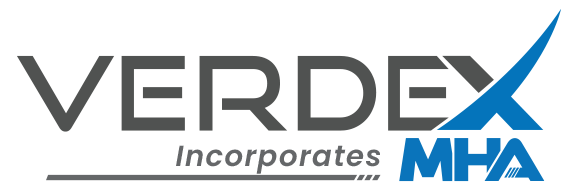
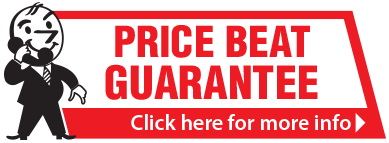






















































































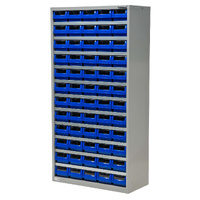






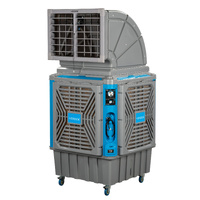
































 Trolleys & Hand Trucks
Trolleys & Hand Trucks Cage Trolleys
Cage Trolleys Cleaning Carts & Trolleys
Cleaning Carts & Trolleys Construction Trolleys
Construction Trolleys Custom Trolleys
Custom Trolleys Hand Trucks & Dollies
Hand Trucks & Dollies Laundry/Linen Trolleys
Laundry/Linen Trolleys Lifting Trolleys
Lifting Trolleys Order Picking Trolleys
Order Picking Trolleys Panel Cart Trolleys
Panel Cart Trolleys Platform Trolleys
Platform Trolleys Powered Trolleys
Powered Trolleys Shelf & Tiered Trolleys
Shelf & Tiered Trolleys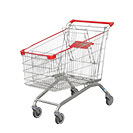 Shopping Trolleys
Shopping Trolleys Stainless Steel Trolleys
Stainless Steel Trolleys Tool Trolleys
Tool Trolleys Utility & Service Carts
Utility & Service Carts Lifting & Handling Equipment
Lifting & Handling Equipment Forklift Attachments
Forklift Attachments Jib Attachments
Jib Attachments Lifting Hoists & Pallet Hooks
Lifting Hoists & Pallet Hooks Load Skates & Tow Tugs
Load Skates & Tow Tugs Manual Stackers & Lifters
Manual Stackers & Lifters Pallet Jacks
Pallet Jacks Pallet Lifters
Pallet Lifters Pallet Rotators & Dispenser
Pallet Rotators & Dispenser Powered Pallet Trucks & Electric Lifters
Powered Pallet Trucks & Electric Lifters Scissor Lift Trolleys and Tables
Scissor Lift Trolleys and Tables Conveyor Equipment
Conveyor Equipment Conveyor Frames & Stands
Conveyor Frames & Stands Roller & Skate Conveyors
Roller & Skate Conveyors Ladders & Access Equipment
Ladders & Access Equipment Container & Yard Ramps
Container & Yard Ramps Ladders & Step Stools
Ladders & Step Stools Work Platforms & Crane Cages
Work Platforms & Crane Cages Drum Handling Equipment
Drum Handling Equipment Drum Storage & Bunding
Drum Storage & Bunding Drum Trolleys & Lifters
Drum Trolleys & Lifters Forklift Drum Handling
Forklift Drum Handling Waste Handling & Bins
Waste Handling & Bins Bin Lifters & Tippers
Bin Lifters & Tippers Plastic Waste & Wheelie Bins
Plastic Waste & Wheelie Bins Steel Waste & Tipping Bins
Steel Waste & Tipping Bins Waste Carts
Waste Carts Dangerous Goods Storage & Spillage
Dangerous Goods Storage & Spillage Aerosol Cans Storage Cages
Aerosol Cans Storage Cages Bunded Pallets & Storage
Bunded Pallets & Storage Corrosive Goods Storage Cabinets
Corrosive Goods Storage Cabinets DG Storage & Trolleys
DG Storage & Trolleys Flammable Liquid Cabinets
Flammable Liquid Cabinets Forklift Gas Storage Cages
Forklift Gas Storage Cages Site Storage
Site Storage Spill Kits
Spill Kits Shelving & Storage Equipment
Shelving & Storage Equipment Stillage & Transport Cages
Stillage & Transport Cages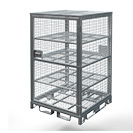 750 Series Cage Configurations
750 Series Cage Configurations Heavy Duty Cabinets
Heavy Duty Cabinets Heavy Duty Shelving
Heavy Duty Shelving Mega Bins & Pallets
Mega Bins & Pallets Packing & Workbenches
Packing & Workbenches Parts Trays & Stor-Pak Bins
Parts Trays & Stor-Pak Bins Pegboard & Louvre Panels
Pegboard & Louvre Panels Plastic Bins & Crates
Plastic Bins & Crates Plastic Handling Solutions Bins
Plastic Handling Solutions Bins Plastic Pallets
Plastic Pallets Stack & Nest Bins
Stack & Nest Bins Pallet Racking Accessories
Pallet Racking Accessories Workplace Equipment
Workplace Equipment Modular Workbenches
Modular Workbenches Electric Height-Adjustable Workbenches
Electric Height-Adjustable Workbenches Floor Matting
Floor Matting General Workplace Equipment
General Workplace Equipment Industrial Weighing Scales
Industrial Weighing Scales Packaging Machinery
Packaging Machinery Stationery Cupboards
Stationery Cupboards Storage and Stillage Cages
Storage and Stillage Cages Tool Trolleys
Tool Trolleys Tooling Cabinets
Tooling Cabinets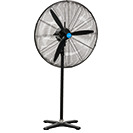 Workshop Fans and Coolers
Workshop Fans and Coolers Safety Barriers, PPE & Signage
Safety Barriers, PPE & Signage Barriers & Bollards
Barriers & Bollards First Aid Equipment
First Aid Equipment Gloves, Knives and PPE
Gloves, Knives and PPE Signage
Signage Cleaning & Site Supplies
Cleaning & Site Supplies Cleaning Equipment
Cleaning Equipment Cleaning Trolleys
Cleaning Trolleys Rubbish Bins
Rubbish Bins Signs & Traffic Supplies
Signs & Traffic Supplies Construction Equipment
Construction Equipment Construction Trolleys
Construction Trolleys Waste Handling
Waste Handling General Site Equipment
General Site Equipment Concrete Equipment
Concrete Equipment Site Storage
Site Storage Lifting Equipment
Lifting Equipment Verdex Specials
Verdex Specials










